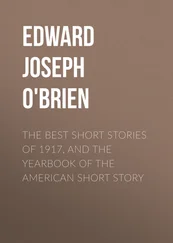Drawing on Babbitt and The Great Gatsby as exemplary representations of suburbia in the 1920s reflects more than the contemporary criticism of emerging (suburban) social trends, however. Two of the most rapidly developing areas in the suburban boom of the 1920s were the Midwest around Chicago and Detroit – two cities strongly marked by their industrial history – and Long Island, or Nassau County in particular. The two novels were thus also chosen due to their geographical background, with Babbitt being set in a fictional Midwestern state named Winnemac, and The Great Gatsby being set on the Great Neck and Cow Neck Peninsula on Long Island. As will be seen, the areas serving as backdrops to the two novels, although rapidly suburbanising at roughly the same time, developed in highly different ways and directions.
In order to respect chronology, the discussion of the relation between the built environment, commodities, design and suburban identity begins with Babbitt , and is followed by a reading of The Great Gatsby within a suburban framework. While Babbitt is unanimously considered a classic of suburban fiction – with readers recognising “the things they lived among: the houses, cars, roads, streets, the outward shapes and colors of people” (Stevenson 101) –, The Great Gatsby is classified as a typical representative of the genre far less often. This is somewhat surprising, since with regard to both time and location, the novel lends itself extraordinarily well to a reading within a suburban framework. While it may not deal with the white-façade-and-picket-fence suburbia that is so commonly a target of ridicule for authors as well as architectural and social critics, the novel should nonetheless be allotted its place in the suburban canon.
1.1. Moulding Suburban Identities Through the Built Environment, Interior Design and Commodities in Sinclair Lewis’ Babbitt
If there is an author who stands out in the literary suburban context of the 1920s, then this author is Sinclair Lewis. Lewis went down in history as the first American novelist to receive the Nobel Prize in Literature, and he was awarded the prize owing to his exceptional ability to create new literary characters. One of these original characters, and certainly one of the most memorable, is the eponymous hero of his novel Babbitt , published in 1922. In fact, the character of George F. Babbitt is original and unique to such an extent that the term “Babbitt” quickly found its way into the English language. A Babbitt, in the OED , is defined as “a materialistic, complacent businessman who conforms unthinkingly to the views and standards of his social set.” The effect that the novel had on language is unsurprising given the author’s unprecedented satirical representation of middle-class conformity and materialism in the United States. Lewis created the literary archetype of the American suburban middle-class husband, father and businessman, and, in addition to the English language, therewith also influenced the works of other writers. In his 1926 travel book Jesting Pilate: The Diary of a Journey , Aldous Huxley, for instance, states that “[a]t all times the vast majority of human beings has consisted of Babbitts and peasants” (279). A further example listed by Hutchisson (89) is English author C. E. M. Joad’s book The Babbitt Warren (1927), a sociological critique of American society. Furthermore, American journalist and satirist H. L. Mencken adopted the term “Babbittry,” which the OED defines as “[b]ehaviour and attitudes characteristic of or associated with the character George Babbitt; […] [especially] complacency and unthinking conformity.” The fact that Lewis’ archetype of a character had such a vast impact on the English language and on other authors leads to the conclusion that the social concept of the “Babbitt” had existed long before the publication of the novel, but an appropriate name for it was lacking. Love (13) argues that with the adoption of the term into the English language, “a name has been given to that which people recognize and accept as true to their experience of life, but which they [had not] realized in any palpable way, for up to that point there had been no word for it.”
As becomes apparent when considering the definition and usages of the term, Babbitt is a satire on America in the 1920s – on its culture, its modes of behaviour –, as well as a broadside fired at the average member of American society. The novel mainly focuses on and criticises the mid-sized industrial city, in contrast to the author’s first successful publication Main Street (1920), which primarily deals with provincialism in small-town America. Babbitt is set in a fictional Midwestern city named Zenith, with the Midwest being commonly associated with mass production and the rising consumer society of the time. After all, this part of the United States, now colloquially referred to as the “Rust Belt,” was the birthplace of Fordism. With respect to the current dilapidation of industrial cities like Detroit, as well as the ever-rising social criticism concerning mass production and consumerism, the Midwest has suffered reputational damage over the decades, but in the Roaring Twenties, it stood as a proud symbol of economic success and progress.
The emerging mass consumer culture of the time was based primarily on spending, leisure and entertainment. The time between 1919 and Black Tuesday in 1929 is referred to as the “big business” period due to the increased production of mass consumer goods, faster production times and technological innovations. In the years between 1921 and 1929, industrial productivity in the United States doubled under the first two Republican presidents, Warren Harding and Calvin Coolidge. The American Dream has always been closely linked to ideas of materialism and consumerism, but never before had people been able to indulge in this aspect of the American Dream to such an extent. The 1920s offered people an opportunity to reach prosperity and success, merging the notions of materialism and personal freedom as depicted by historian James Truslow Adams in his 1931 book The Epic of America . The author states that “the American dream that has lured tens of millions of all nations to our shores in the past century has not been a dream of merely material plenty.” Much more than this, “[i]t has been a dream of being able to grow to fullest development as man and woman, unhampered by the barriers which had slowly been erected in older civilizations, unrepressed by social orders which had developed for the benefit of classes rather than for the simple human being of any and every class” (Adams 405). The dream of material plenty combined with personal freedom is considerably questioned in Babbitt , however. Lewis is concerned with the mass production of material goods as much as he is concerned with the constricting “mass production” of American society, and that of the (upper) middle class in particular. Babbitt deals with the mass production of political ideals, of religious beliefs, of commercial interests, but also with the standardisation of commodities and the built environment.
In order to establish how the built environment and mass-produced commodities may contribute to the standardisation of the (suburban) individual, however, it is necessary to first characterise this standardised identity by scrutinising the protagonist of the novel. George F. Babbitt is the epitome of the well-to-do self-made businessman in the Midwest of the early 1920s, with the 1920s being a period in time when the United States had “experienced a transition from the stage of industrial accumulation to advanced corporate accumulation” (Gordon 122). Coming from a seemingly average background, Babbitt climbed the social ladder and moved from a rural area to the mid-sized city of Zenith, Winnemac – the embodiment of the “Corporate City” (Gordon 122).1 The protagonist divides his time between his real estate business and social life in the city centre, and his private life as a suburban husband at the edge of the city, in Floral Heights. Babbitt’s existence, similar to that of the majority of people in his social environment, revolves around the business world, personal success, as well as earthly possessions and status symbols.
Читать дальше











